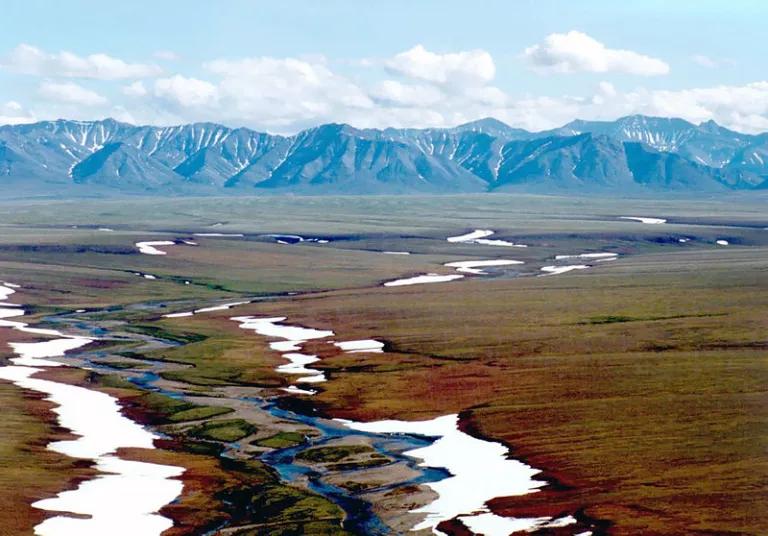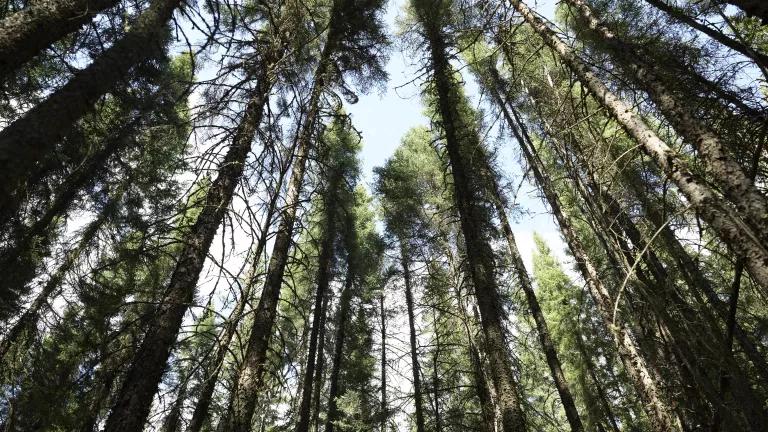BREAKING: Analysis of Refuge Seismic Impacts Released

Even during a shutdown, Trump has somehow found a way to barrel ahead with his project to permanently scar the Arctic National Wildlife Refuge that will send dozens of seismic exploration trucks across the fragile tundra of the Refuge’s Coastal Plain. Remarkably, Trump’s Interior Department maintains that these trucks won’t cause significant environmental impacts. Unsurprisingly, there’s already extensive evidence of the serious impacts this will have on human rights and wildlife.
Now, a group of Arctic scientists has painstakingly outlined the extent of the destruction that this exploration will likely cause.
Their white paper focuses on impacts to the Coastal Plain and its physical features and water flow. It makes pretty clear that seismic exploration will cause long-lasting and cascading destruction. The impacts are not confined to truck tracks. The Coastal Plain’s tundra is an incredibly fragile environment. Stamping a massive grid of tracks across the face of the Plain, the paper notes, is likely to have “large consequences to habitats of many species of plants, insects, small mammals, and birds.” The tracks will create new channels for water, which can exacerbate erosion and permafrost thawing, especially when combined with warming due to climate change. More broadly, there will “likely be significant, extensive, and long-lasting direct, indirect, and cumulative impacts . . . to the microtopography, hydrology, permafrost and vegetation of the” Coastal Plain.

While the paper is well worth reading in its entirety, it highlights two reasons that seismic work in the Refuge can be so destructive. First, it explains that Coastal “Plain” is something of a misnomer. Unlike the relatively flat lands of the Western Arctic that have sadly seen more extensive seismic exploration, the Refuge’s Coastal Plain “is steeper, more incised, and includes more river systems.” Terrain composition controls how snow, hydrology, and permafrost systems operate, and makes the Refuge uniquely sensitive to the impacts of seismic exploration. Here’s why this is so critical: it means that Interior’s experience in permitting seismic exploration in the Western Arctic won’t help it analyze seismic in the Refuge.
Second, the paper shows that the Coastal Plain’s snow cover is highly variable. To minimize the harm of seismic, you need enough snow cover. In the Coastal Plain, however, “low amounts of winter snowfall, strong winter winds, and the hilly terrain . . . combine to create substantial areas of very thin and unpredictable snow cover.” Given the data gaps in snow measurement and the impacts of climate change, Interior is unlikely to be able to ensure sufficient snow cover.

The Refuge is America’s “last best place,” and the Coastal Plain is its biological heart. It is insane to even consider running convoys of 30-ton trucks over this fragile landscape. It is even more ludicrous to insist that such joyrides will not cause harm. This important paper amply demonstrates the massive risks of conducting seismic exploration in the Arctic Refuge. Interior is not just ignoring these risks, but also misleading the American public.



